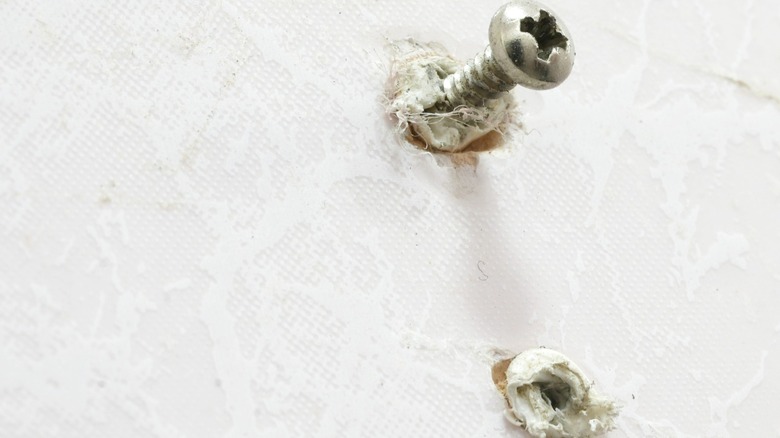If You're Having Trouble With Your Drywall Anchor, Grab This Common Tool
Installing drywall anchors of any kind is an effortless task, but removing them can be a whole other story. While anchors, understandably, need a firm grip in drywall to reliably support items, that doesn't do us any favors when it's time to remove them. Damaged pieces and splayed grips behind the wall often make it more complicated than simply unscrewing them. To some, the preferred solution is to admit defeat and take the seemingly easiest route possible by pounding the anchor into the wall and mudding over it.
Though effective, this approach isn't always appropriate. For starters, you might cause more drywall damage than expected when you knock the anchor back in. By removing it cleanly, the damage is minimal (meaning an easier patch job), and you may even be able to reuse the hole for another anchor.
How each type inserts into drywall is a key thing to know about the different wall anchors when you're preparing to pull them out. While winged varieties, like toggle and molly bolts, can involve unique removal processes, expansion and self-drilling anchors are pretty easy to remove. You can use a corkscrew as a clever kitchen hack to remove stubborn drywall plugs or insert a screw into the anchor so you can grip it with something and pry it out in seconds. Needle-nosed pliers are a popular and readily available tool for this. But if you need an easier way to extract a stuck anchor, a better choice may be your claw hammer.
Using a hammer to pull out a drywall anchor
Insert a screw into the drywall anchor only a little ways to grab it by the threads. You don't want to drive the screw too far, or you might force it into the expanding portion that locks the anchor into the wall, making it harder to remove. With the screw inserted, use your claw hammer to pry it as you usually would to pull out a nail. The screw and the attached anchor should slide out smoothly. To prevent the hammer's head from damaging the drywall as you pry it, lay a wide board or spare piece of drywall across the wall. Pry the hammer against the board (rather than directly on the drywall) to distribute the weight.
With this method, you can use any screw to remove an old anchor you plan to trash. But maybe you inserted an expansion anchor only to realize you needed it somewhere else. If the anchor is new and hasn't had a screw in it yet, you might be able to reuse it. The critical note is to use the original screw that matches it when removing it from the wall so you don't damage the anchor. Using a claw hammer rather than pliers will let you apply more force to extract tricky anchors and provide more control for cleaner results. The only downside is the extra board you'll need to protect the wall, but it's a negligible price to pay for all the aggravation you'll save whenever you need to use and remove wall anchor screws.
